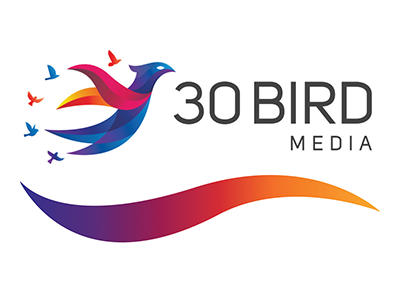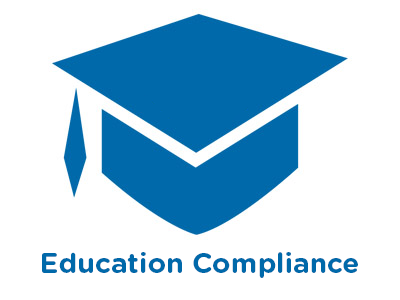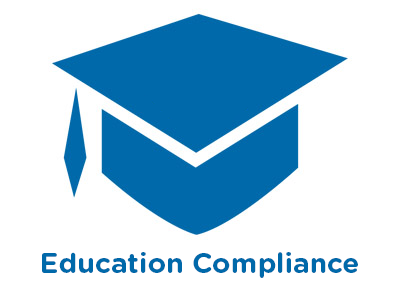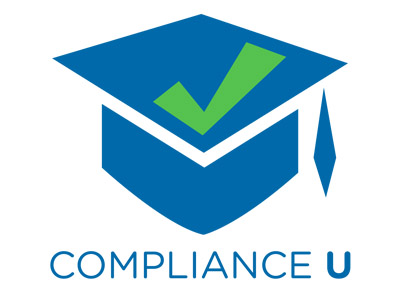 |
Advanced Interpersonal Communication: Communication Styles and Methods (Instructor Guide) |
0.75 |
To be successful in the workplace, you must be able to effectively communicate and cooperate with clients and co-workers. Learning about the four types of communication styles helps a listener understand a speaker’s perspective. It also helps a speaker understand how their communication affects the listener.
In this course you will learn: to identify primary and secondary communication styles, and to communicate using various verbal and nonverbal modes of communication.
This Instructor's Edition of this course includes notes and suggestions to assist you in presenting the material, whether in an in-person classroom setting or as an instructor-led online or distance-learning course. It also provides you with the answers to questions found in mid-lesson activities, as well as in the quiz that concludes the course. |
 |
Hose Competency (Instructor Guide) |
1.00 |
This is the Instructor Guide for Hose Competency. This competency evaluates the ability of assigned companies to perform hose tasks including stretching, advancing, and operating fire hose streams. This competency may also be conducted as an independent drill or evolution. |
 |
Microsoft Project 2021/365 Complete |
16.00 |
30 Bird Media's Microsoft Project 2021/365 Complete courseware covers the concepts and skills needed for maximum productivity in Project, starting with fundamentals and working up to advanced tools and techniques.
There are no specific prerequisites for this course. However, general computer user knowledge is assumed. Any additional experience having worked with forms and/or databases will be helpful.
You will benefit most from this course if you have at least some prior knowledge of project management procedures and practices. It is intended to support you in applying this knowledge through the use of Microsoft Project as a project management tool. |
 |
Exploring Developmental Needs and Characteristics: Age Group 5 to 7 for Paraprofessionals |
1.00 |
Certain developmental needs and traits are associated with younger school-age children, while others are typical of older school-age children. While the differences between school-age children of different ages are not clear-cut, there are some general traits and tasks that are often associated with younger school-age children. This course delves into the specific traits of students between the ages of 5 and 7. |
 |
Conflict and Communication: Why Can't We Be Friends? |
1.00 |
Conflict occurs when we are in relationship with others. In fact, the hallmark of a healthy relationship is not the absence of conflict, but the ability to successfully resolve it. Unfortunately, resolving conflict is not a skill many of us were taught. We'll explore the fundamental causes of conflict and the dynamics that can escalate conflict. Finally, we’ll cover the tools necessary to navigate conflict successfully, including effective communication strategies. |
 |
Change Management: Obstacles to Change |
0.75 |
This course will cover how to identify the causes of resistance and the negative reactions to change and the methods for managing them. You will also learn how to identify the causes of complacency and prepare for crisis. |
 |
A Student Guide to Fire Safety |
0.50 |
Between January 2000 and May 2015, 85 fatal fires in dorms, fraternities, sororities, and off-campus housing took the lives of 118 people. This course offers students a refresher about fire safety, including the main causes of campus fires, the actions students can take to prevent fires, and the importance of working smoke alarms and knowing two ways out.
|
 |
A Student Guide to the Clery Act |
0.50 |
The Jeanne Clery Disclosure of Campus Security Policy and Campus Crime Statistics Act, commonly known as the Clery Act, is a federal law that requires colleges and universities to track and disclose information about crimes that occur on or near campus. This course is designed to help students understand how the Clery Act impacts them and their school. |
 |
Combating Sexual Harassment in the Workplace (Spanish) (Corrections) |
0.75 |
En los últimos años, el tema del acoso sexual en el lugar de trabajo se ha convertido en el centro de atención nacional, trayendo consigo una renovada conciencia sobre la naturaleza grave e inaceptable de estas acciones y las graves consecuencias que conllevan.
Según la Ley del Estado de Nueva York (vigente en octubre de 2018), todos los empleadores del estado deben establecer una política de prevención del acoso sexual que incluya capacitación anual de conformidad con la Sección 201-G de la Ley Laboral.
Este curso fue desarrollado por CypherWorx, Inc. en alineación con los materiales de capacitación desarrollados por el Departamento de Trabajo y la División de Derechos Humanos para superar los estándares requeridos por el estado de Nueva York.
A través de este curso, los alumnos: Obtendrán una mejor comprensión de lo que se considera acoso sexual; Aprenda cómo denunciar el acoso sexual; y Obtenga información sobre las opciones de informes externos.
Al completar este curso: Comprenderá mejor lo que se considera acoso sexual; Aprenderá cómo reportar el acoso sexual; Aprenderá sobre las opciones de informes externos. |
 |
Brain Development in Infants and Toddlers (CDA 8) |
2.00 |
Brain development has changed over the last 20 years. Early brain development focused mainly on the intellectual aspects of the brain, but over the last 10 years, more focus has been placed on the social emotional exchanges in infancy and how that affects brain development. Early experiences predispose how children see the world. This course is designed to be part of a Child Development Associate (CDA) Credential™ curriculum and covers CDA Subject Area 8, Understanding Principles of Child Development and Learning. This course can also be taken as a stand-alone learning event or as part of a broader early childhood education curriculum. |
 |
Capacitación sobre seguridad en andamios y escaleras de mano (Spanish) Scaffold and Ladder Safety Training |
0.50 |
Este curso cubre cómo corregir o eliminar peligros de caídas relacionados con el uso de andamios y escaleras en el lugar de trabajo y comprender los requisitos de la OSHA referentes a seguridad en andamios y escaleras. |
 |
Cats |
1.00 |
This course will provide an introduction to cats, including an overview of physical characteristics, habitat, behavior, reproduction and the conservation efforts dedicated to protecting this taxonomic group. |
 |
Strategic Decision Making: Preparing to Make Decisions |
1.50 |
In this course you will learn to: identify the factors that influence the outcome of a decision, and follow the steps of the decision-making process, define your decisions appropriately by establishing objectives, identify the problems decision frames can present, and the actions you can take to understand decision frames, and identify the guidelines for avoiding the problem of overconfidence, and describe the techniques for managing uncertainty. |
 |
Grammar Skills: Word Choice |
1.00 |
This course covers how to choose the appropriate words for clear communication and how to recognize and use frequently misused words correctly. You will also learn how to avoid common spelling errors and correctly attach prefixes and suffixes to words. |
 |
Exploring Four Areas of School-Age Development: Physical Development |
0.50 |
One of the most helpful ways to gain an understanding of the needs and interests of youth between 5 and 12 is to examine their development from four different perspectives: 1) Physical Development, 2) Cognitive Development, 3) Social Development, and 4) Emotional Development. In this course, we will explore the physical development perspective. |
 |
Exploring Four Areas of School-Age Development: Social Development |
0.50 |
One of the most helpful ways to gain an understanding of the needs and interests of youth between 5 and 12 is to examine their development from four different perspectives: 1) Physical Development, 2) Cognitive Development, 3) Social Development, and 4) Emotional Development. In this course, we will explore the social development perspective. |
 |
Customer Service: Using What You've Learned (Corrections) |
0.25 |
This course will provide you with the information and—we hope—the inspiration to improve your customer service skills and work toward personal success. The final two steps are up to you: You must implement what you have learned, and continue to work on improving your skills. |
 |
Fundamental Tools to Monitor Child Development (CDA 7) |
2.00 |
This course immerses early care and education professionals in the powerful trio of observation, documentation, and assessment. Discover how these tools allow you to closely monitor each child's progress, identify individual needs and interests, and tailor support accordingly. Dive deeper into using assessment activities to refine and elevate the quality of preschool care, ensuring every child reaches their full potential. |
 |
Scaffold and Ladder Safety Training |
1.00 |
This course covers the importance of ladder and scaffold safety, common hazards when using scaffolding and ladders and how to prevent serious injury. |
 |
Cultural Competence for Paraprofessionals |
0.75 |
Culture and cultural elements are essential components of people's identities. Understanding the cultural elements as paraprofessionals allows for a greater appreciation for students and can improve relationships. Cultural elements may include race and ethnicity, gender, and socio-economic status. These elements of culture are not separate from the larger cultural context in which we live and work, especially as paraprofessionals. It is important to recognize that many culturally and linguistically diverse families have specific customs and traditions that may not necessarily be connected to a particular cultural group. By understanding cultural competence, paraprofessionals can provide responsive instruction and support to students from all backgrounds. |
 |
Organizational Communication: Power, Politics, and Diversity |
0.75 |
Power is the ability to influence someone to do something that they would not do without encouragement. Various types of power and power strategies depend on the level of influence. The existence of different levels of power in an organization gives rise to organizational politics.
Politics can arise between individuals who differ from each another. To avoid confrontation arising from differences, it is important for people to recognize the benefits of diversity within their organization.
In this course you will learn to: identify different levels and types of power, identify strategies to manage diversity and to communicate in different cultures, and identify the steps and guidelines for empowerment. |
 |
Hands-On Math Learning Activities (CDA 2) |
2.00 |
Move beyond counting! This course unveils the exciting world of early math beyond simple number recognition. Witness engaging demonstrations of age-appropriate activities for infants, toddlers, and preschoolers, igniting their natural curiosity and love for mathematical concepts. Immerse yourself in the power of hands-on learning, the cornerstone of building strong foundational math skills in young minds. |
 |
Guiding School-Age Children in Groups: Supervision and Boundaries |
1.00 |
When large numbers of children are involved in the program, it is challenging to create and deliver school-age program activities that can meet the needs of all children. The key to success is taking a systematic approach to program planning. It is important for staff to understand how to select appropriate activity options and use effective management strategies that make it possible to offer a balanced variety of simultaneous activity options. This understanding will help staff plan and implement a program that effectively supports, nurtures, and guides individual differences and fosters positive interaction among children in groups. |
 |
Guiding School-Age Children in Groups: MAPs and DDADA |
1.00 |
When large numbers of children are involved in the program, it is challenging to create and deliver school-age program activities that can meet the needs of all children. The key to success is taking a systematic approach to program planning. It is important for staff to understand how to select appropriate activity options, and use effective management strategies that make it possible to offer a balanced variety of simultaneous activity options. This understanding will help staff plan and implement a program that effectively supports, nurtures, and guides individual differences, and fosters positive interaction among children in groups. |
 |
The NoFEAR Act (Corrections) |
0.25 |
This course will inform participants of the Notification and Federal Employee Antidiscrimination and Retaliation Act, also known as the NoFEAR Act. At the conclusion of this course, participants should understand the basic provisions of the NoFEAR Act, know what Antidiscrimination and Whistleblower Protection Laws protect them, and understand how to file a complaint alleging discrimination, retaliation, or a violation of the Whistleblower Protection Laws. |


























